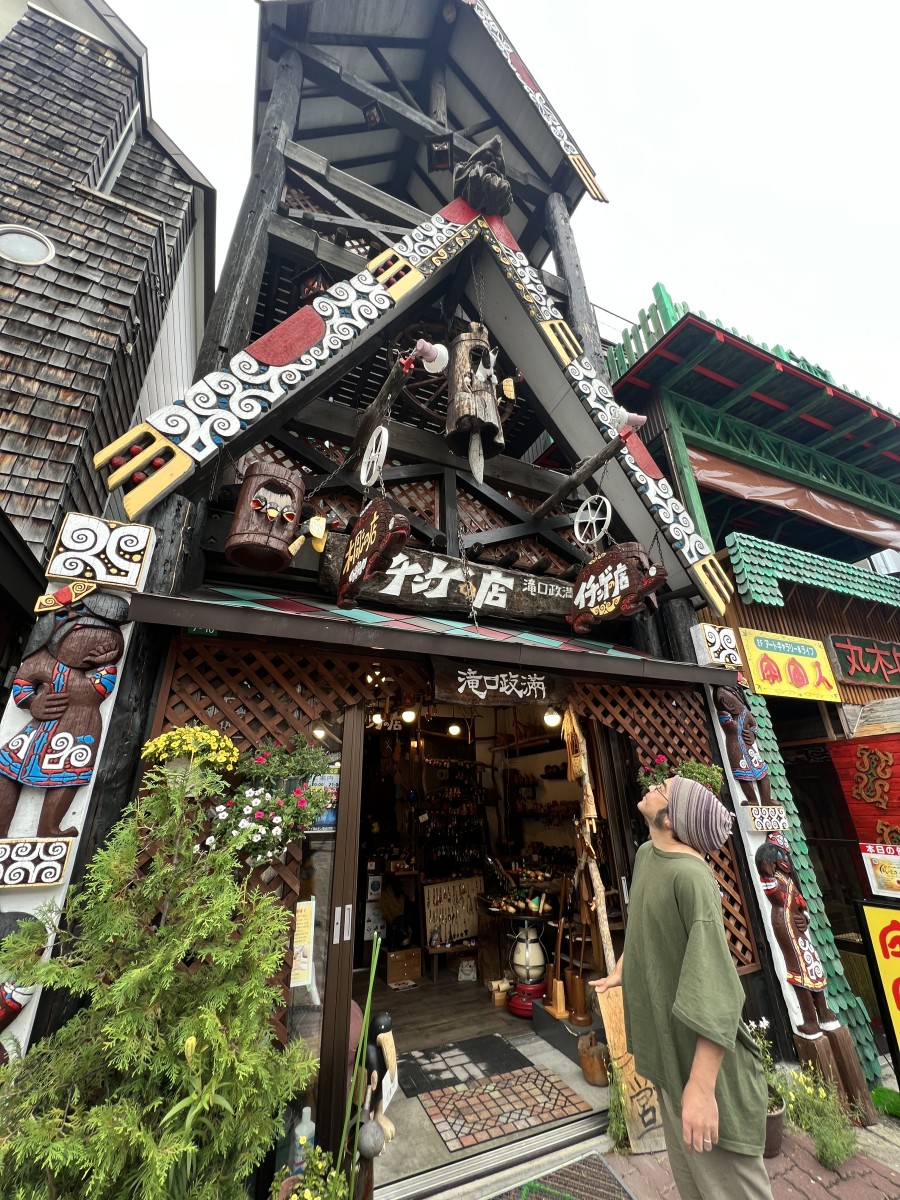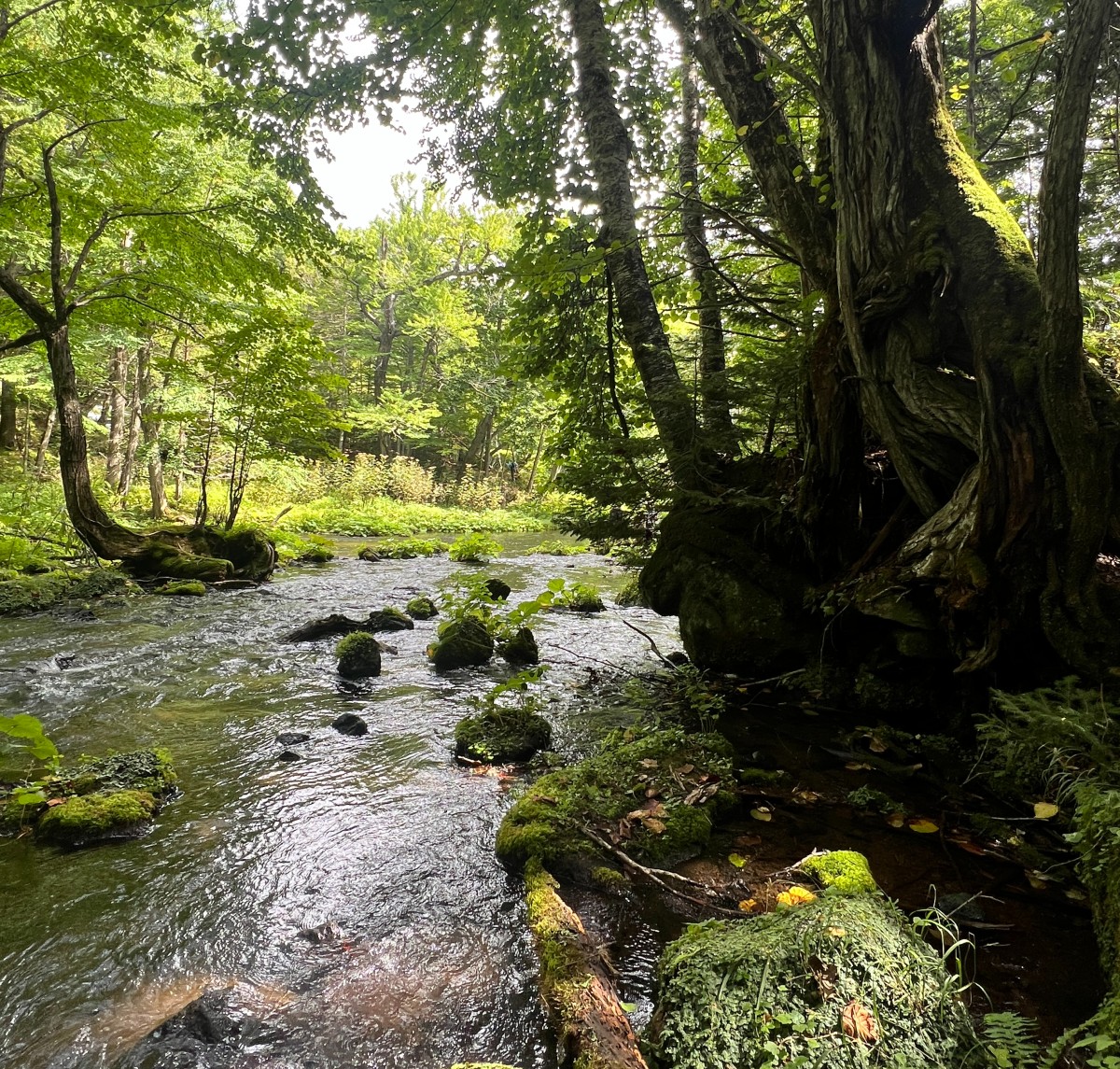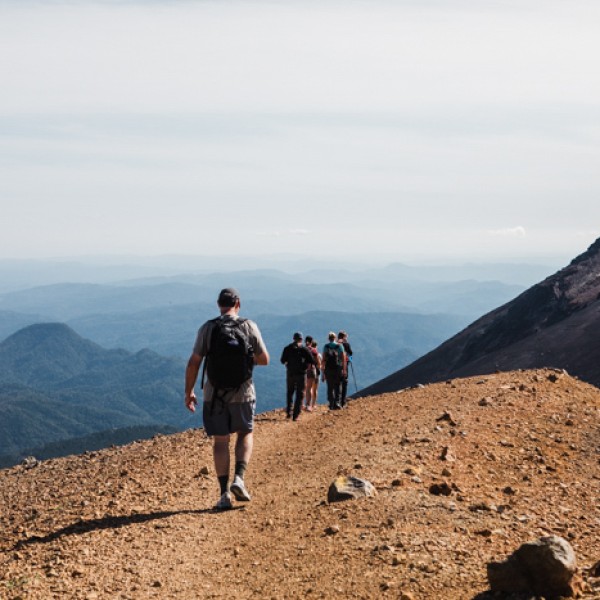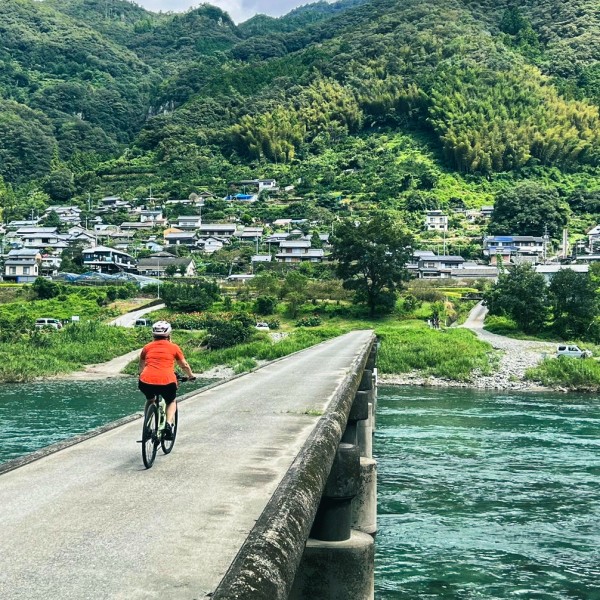By Leslie Hsu Oh
How Adventure Travel Inspires Chōwa
Six of Japan’s 34 national parks reside in the northernmost main island, Hokkaidō. Shiretoko, the most remote and biodiverse, is located on a peninsula protruding out of the northeast like a sword slicing the Sea of Okhotsk from the Nemuro Strait. The Ainu, an Indigenous people who have lived here since time immemorial, named it the “End of the Earth,” which accurately describes a landscape ravaged by unrelenting winds, low temperatures, and sea fog. Volcanoes form the spine of the peninsula, where drift ice and waves chip into coastal cliffs of solidified lava flow formed from eruptions hundreds of thousands of years ago.
At the Shiretoko World Heritage Conservation Center, where I searched for a cancellation stamp similar to what my parents and I had finished collecting in the United States, I read, “There are no roads or properly developed paths here. The weather and sea conditions are highly unpredictable, and brown bears can be found in large numbers. For these reasons, this area is a very dangerous place.” A smile spread across my face. It’s why fly fishing in Hokkaido made my bucket list. As my time on earth ticks by, I like to find purpose in places like this.
 Leslie Hsu Oh takes a beat on her hike to listen to the waves chipping away at Shiretoko National Park’s coastal cliffs. (Photo by Masako Endo)
Leslie Hsu Oh takes a beat on her hike to listen to the waves chipping away at Shiretoko National Park’s coastal cliffs. (Photo by Masako Endo)
In our first two days in Shiretoko, the weather thwarted our attempts to fish, including our plans to see killer whales. But none of this mattered. It had taken a herculean effort to put together this fishing expedition. Shigeru “Dameon” Takada (64) first planted the idea in 2016 by inviting the adventure travel community to fly fish in Hokkaidō. Our presence here meant that Dameon and his son Kensuke, Deputy Director of Marketing at Tsuruga Resort Company, had succeeded in shifting the perspectives of their colleagues from casino tourism to the establishment of Hokkaidō as a world-class adventure tourism destination. They hope adventure tourism will create sustainable livelihoods, protect nature, and promote conservation efforts.
Before hiking the “End of the Earth,” I had never heard about the plight of the world’s largest owl with a wingspan of six feet. Due to climate change and the loss of habitats like the old-growth forests I photographed and the same rivers that I fished, the Blakiston’s fish owl is critically endangered. There are only 140 in the entire world, and half of them live in Shiretoko.
I was visiting during the time of the year when salmon leave their ocean life and swim upstream to spawn. Their bellies carry phytoplankton, the starting point for the food web, which is uniquely produced by the currents and sea ice melts in the lowest latitude in the world. As the surface of the ocean freezes, nutritive salts at the bottom of the ocean are pulled upwards. When sunlight strikes the ice, phytoplankton proliferates with salts, resulting in a richly productive marine and terrestrial interconnected ecosystem (hence the designation of UNESCO World Natural Heritage Site).
The salmon that anglers catch and release feed owls and brown bears with rich marine nutrients. Then, whatever parts of the fish that are not eaten decompose and nourish the forests. Learning this, I felt sudden clarity about chōwa — a Japanese philosophy that reminds us to search for balance and pursue a shared vision, especially when dealing with challenges.

A Shiretoko landscape featuring the dense forests and rugged peaks that run through the peninsula’s center. (Photo courtesy of Hokkaido Adventure Travel Association)
At Akan-Mashū National Park, where we fly-fished with Dameon, I noticed Blakiston’s fish owls appeared everywhere and in all kinds of artwork: paintings, statues, and T-shirts. Enormous owl wood carvings protected entrances and dominated the skies at the main gates to the Akanko Ainu Kotan (Ainu settlement inhabited by 120 people) in honor of their Lord of the Owls, a deity they call Kotan-kor-kamuy, protector of the village. The hallway that connects two hotels owned by the Tsuruga Resort Co., Lake Akan Tsuruga Wings and Akan Yuku no Sato Tsuruga, featured masterpieces of the late Masamitsu Takiguchi, an Ainu hearing-impaired artist who opened a shop in Ainu Kotan.
 Kengo Takiguchi fondly remembers a time when the characters his father carved on their storefront were animated. (Photo by Leslie Hsu Oh)
Kengo Takiguchi fondly remembers a time when the characters his father carved on their storefront were animated. (Photo by Leslie Hsu Oh)
I stayed at the Tsuruga Wings with views of Lake Akan, where from May to June and October to November, anglers attempt to catch the golden char: a white-spotted char that looks like champagne gold beneath the sun. Dameon, who founded Tsuruga Adventure Base SIRI jokes that anglers love the area because, in addition to a variety of fishing, they can get on the water and, in just minutes, return to the luxury of five different onsens (natural open-air and indoor hot springs created from groundwater heated by the hot magma chambers of 31 active volcanoes) and a range of culinary experiences.
The presence of Marimo (green alga threads rolled by micro-currents into algal spheres, as large as 1 foot in diameter at the bottom of Lake Akan) also attracts anglers to the area because the Akan-Mushū National Park and the Maeda Ippoen Foundation protect this lake and surrounding forest from developments like dams or logging. Don’t forget to try Marimojito cocktails made with rum, mint, lime, and apple-flavored crushed jelly rolled into green balls.
At the end of two beautiful days on the Akan River, where I either hooked or landed a dozen rainbows but frustratingly never at the same time, Junpei Matsuoka (24), who moved here the year before to learn from Daemon, showed me a special spot on the Akan River near Takimi Bridge that reminded me of a scene from a fairytale. Beneath the dappled shade of Sakhalin fir and Ezo spruce, a series of subtle waterfalls, decreasing in size, tumbled downstream over boulders and rocks coated with lush green moss and lichen.
 Salmon nap beneath the roots of these katsura trees. (Photo by Leslie Hsu Oh)
Salmon nap beneath the roots of these katsura trees. (Photo by Leslie Hsu Oh)
Matsuoka waded upstream. I tried to follow, but my boots kept catching underwater. Instead of fumbling our way through Japanese or English, we embraced chōwa. Matsuoka returned to my side, wrapped an arm around my waist, and together, we stumbled into several quiet pools rimmed with katsura trees. Matsouka held a finger to his lips, then pointed at a trout sleeping beneath its roots.
I was reluctant to cast. Matsuoka read my mind. As a photographer, I’m always behind the lens. He pulled out my iPhone from his wader pocket. Without the pressure to document, I could estimate that the rainbow trout ignoring my fly might be about 27 inches, and as I am focusing on my fishing target, I see a blur of black fur dive into the pool.
“Oh my god,” I looked at Matsuoka. “What was that?”
He blinked in surprise, too. “Mink?” He missed the encounter, just as I would’ve had I been focused on composition and light.
 Tsuruga Adventure Base SIRI guide Junpei Matsuoka gives Leslie Hsu Oh, who is usually behind the lens, this rare gift: fly fishing on the Akan River. (Photo by Junpei Matsuoka)
Tsuruga Adventure Base SIRI guide Junpei Matsuoka gives Leslie Hsu Oh, who is usually behind the lens, this rare gift: fly fishing on the Akan River. (Photo by Junpei Matsuoka)
Before I departed the next morning, I visited Takiguchi’s shop, now run by his son Kengo, who also carves and leads cultural tours. At every national park, my mother supported the local Indigenous artists, a tradition I’m trying to continue. Unfortunately, I couldn’t find anything within my budget. Kengo dug around beneath a table until he found a solution: T-shirts printed with an elaborate Blakiston’s fish owl designed by his father. These are the moments I treasure—when adventure travel creates sustainable livelihoods and sparks chōwa between humans, flora, fauna, mountains, rivers, and lakes.
ATWS 2023 media delegate Leslie Hsu Oh is an award-winning writer and photographer who writes for National Geographic, Alpinist, Travel +Leisure, Conde Nast Traveler, Outside, Saveur, Sierra, Vogue, and more. Read her work at www.lesliehsuoh.com or @lesliehsuoh.


